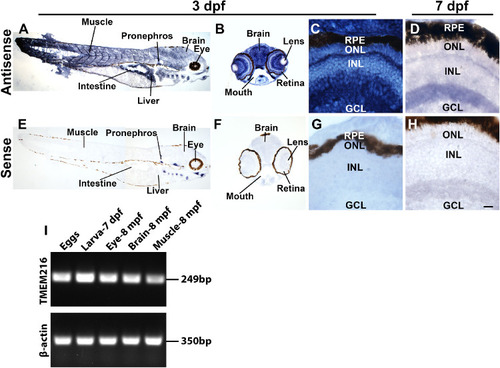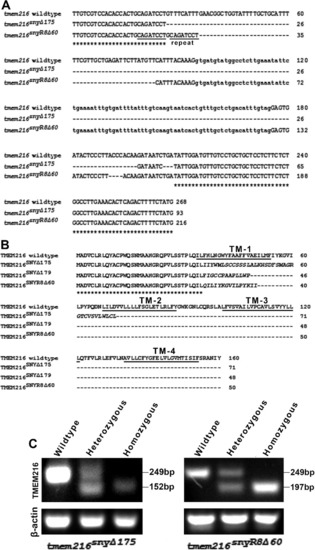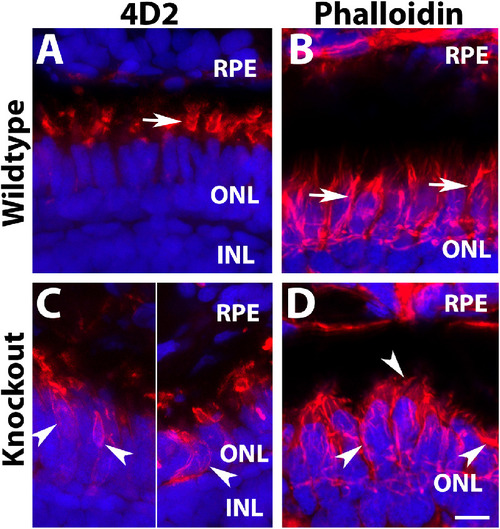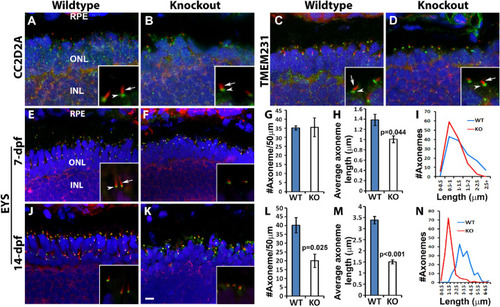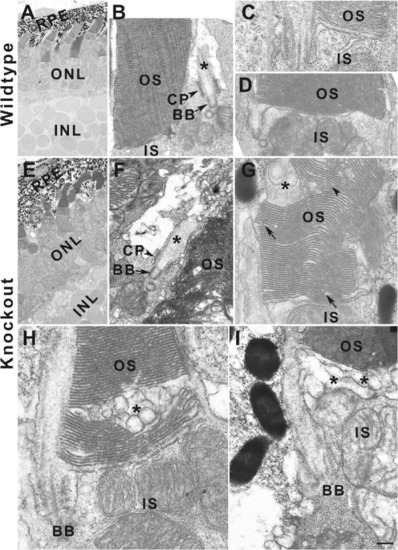- Title
-
TMEM216 Deletion Causes Mislocalization of Cone Opsin and Rhodopsin and Photoreceptor Degeneration in Zebrafish
- Authors
- Liu, Y., Cao, S., Yu, M., Hu, H.
- Source
- Full text @ Invest. Ophthalmol. Vis. Sci.
|
|
|
Two |
|
Cone outer segment generation is reduced in EXPRESSION / LABELING:
PHENOTYPE:
|
|
Mislocalization of cone outer segment proteins in |
|
Rod outer segments were reduced in EXPRESSION / LABELING:
PHENOTYPE:
|
|
Defective organization of F-actin in EXPRESSION / LABELING:
PHENOTYPE:
|
|
TUNEL-positive photoreceptor nuclei were increased in |
|
Length of photoreceptor axonemes was reduced in knockout zebrafish. Cryosections were immunostained with axoneme marker, acetylated α-tubulin ( EXPRESSION / LABELING:
PHENOTYPE:
|
|
|

ZFIN is incorporating published figure images and captions as part of an ongoing project. Figures from some publications have not yet been curated, or are not available for display because of copyright restrictions. PHENOTYPE:
|

